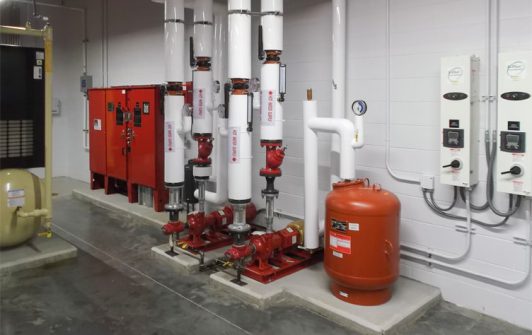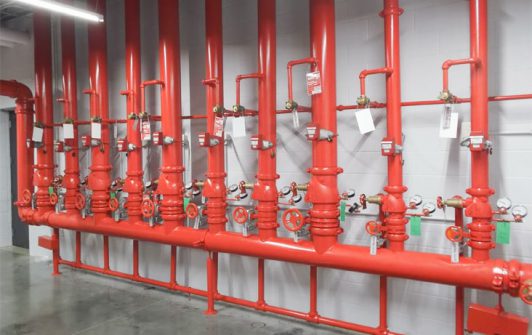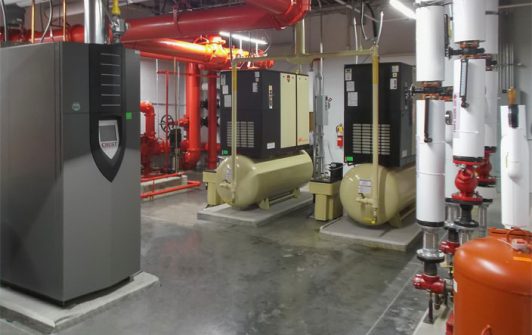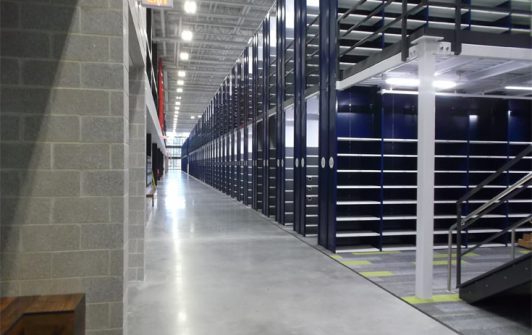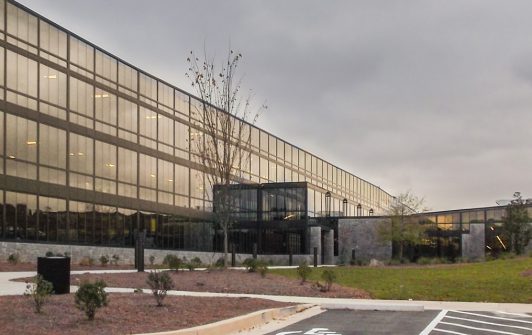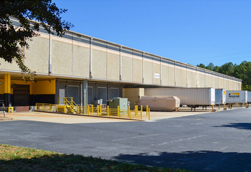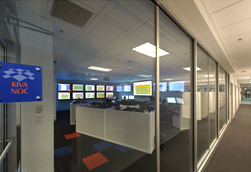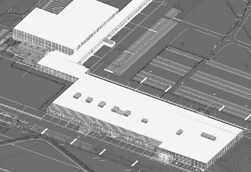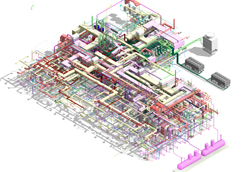Engineering Design Reinforces Corporate Culture: Bringing Warehouse and Corporate Office Space Under One Roof
When your business is e-commerce, you have to be organized, efficient and fast to meet consumer demands and edge out the competition. And you need a flexible space to make it all happen – in the form of an expansive distribution center for storage, shipping and receiving, and corporate office space to manage and grow the business.
But how do you connect those two environments and the employees who manage the different operations?
For starters, you hire AHA Consulting Engineers, a design firm that specializes in both Corporate Office and Industrial projects, to blend the contrasting spaces together.
For a recent industrial office project, the client aimed to create one metro-Atlanta campus for all of its southeastern operations. They wanted a warehouse and regional corporate office under one roof with room for future expansion. And they wanted to incorporate the latest in facility design and material handling technology. But most importantly, the client wanted its warehouse employees and office employees to feel connected to the business and to each other.
To understand the business and its operational requirements, AHA toured the client’s existing facilities. These tours enabled the design team to see what worked and what needed to be improved in each location. “The company manages extensive distribution, and the warehouse is not just for storing materials,” said Steve Roberts, engineer at AHA. “Seeing the workforce in action helped us better understand the organization’s facility needs.”
During each tour, the company impressed on the design team its dedication to creating a family environment, where every employee is critical to the business’s success. The client wanted shared break rooms and common spaces for warehouse and office employees. “They have cultivated a strong sense of family, and their workplace is their home,” explained Roberts.
But blending warehouse and office space was not without challenges. While the architectural team devised a design layout that incorporated large windows and would accommodate a 250,000-sf expansion, AHA had to design ductwork and building systems that would not obstruct any employee’s views to the outdoors. The 720,000-sf design incorporates airy spaces in both the warehouse and office areas, with expansive glass windows that offer every employee scenic outdoor views
AHA meticulously designed the mechanical, electrical and plumbing systems in and around a pre-engineered 125,000-sf mezzanine structure that provides additional storage space and automated distribution in the warehouse. “In most industrial facilities, aesthetics aren’t of great concern,” said Mark McNaron, former Partner and Managing Director of AHA’s Southeast Region. “But the client didn’t want any exposed piping or conduit raceways. Our design ensures everything is concealed from view.”
One particularly interesting design challenge was to maintain environmental conditions and air pressure relationships between the offices and warehouse areas which are wide open to each other. Developing and maintaining air pressure relationships between dissimilar occupied spaces that are separated by demising partitions is challenging enough. “We found a design solution to implement that would solve exactly that,” says Roberts. “Which helps the client maintain the sense of unity between office and warehouse staff.”
While natural lighting is maximized throughout the facility, modern LED lighting systems provide an interesting addition to the warehouse design. Lighting controls detect when employees walk down the storage aisles in the warehouse and adjust the light accordingly. Windows with electrified glazing panels detect glare to automatically darken the glass during peak brightness or increase daylight, depending on the time of day. This interior lighting design maximizes energy efficiencies and provides employees with optimum lighting control. And the exterior lighting design eliminates the use of light poles at the truck apron. Instead lighting illuminates the giant receiving lot from both the building and the adjacent roadway.
Three different utility services supply power for the massive facility, with a full-sized, bi-fueled generator providing back-up power for each. The generators can power the facility with on-site diesel or utility natural gas. “It is unusual to provide a back-up system for the entire facility,” McNaron explains. “That extra layer of caution speaks to the company’s commitment to employee wellbeing and customer care.”
Utilizing AHA’s expertise in corporate office and industrial project helps this e-commerce business run not only efficiently, but the proper way for its employees.




